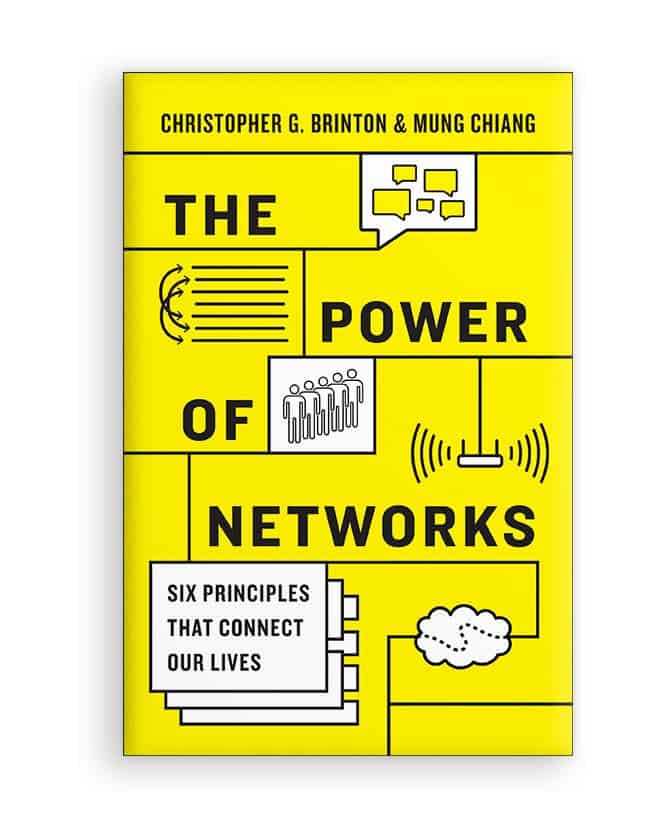The Power of Networks: Six Principles that Connect Our Lives
By Christopher G. Brinton & Mung Chiang
Princeton University Press, 328 pp | Buy on Amazon
Ever wondered how Netflix seems to know you better than you do when it recommends new series? Well, it does so thanks to a framework that’s common in other situations — like how Google sorts search results or how WiFI directs bandwidth. In their book, authors Christopher G. Brinton & Mung Chiang explain how networks work and how these affect our lives based on six core principles.
Networks have always existed, today much more so than ever thanks to devices that enable us to connect to the largest network in the world — the internet. Building up from a massive open online course presented by the pair a few years back, The Power of Networks aims to demystify the complex structure of rules, standards, and processes which networks use today.
The book is divided into six chapters, each with its corresponding theme or ‘principle’: sharing resource, ranking and ordering, the collective wisdom and folly of crowds, routing, and management. Along the way, the authors also include interviews they made with renowned experts such as former Google CEO Eric Schmidt, former Verizon Wireless CEO Dennis Strigl or Vint Cerf and Bob Kahn, the founders of the great internet itself.
Using clear language and familiar analogies, the authors take turns in explaining some very big ideas. For instance, one analogy that pops up on more than one occasion is that of the crowded cocktail party. If everyone talked simultaneously, it would be very difficult for anyone to engage in a meaningful conversation. A host might decide to solve this capacity issue by asking guests to speak at separate times (analogous to how TDMA or 2G allowed mobile phone users to share the spectrum). Alternatively, the host might ask every guest to speak in a different language and then they can all talk simultaneously since each pair listening for one language in particular (analogous to the CDMA system). Things get a lot more exciting when the authors explain 3G and 4G networks.
If your job demands it or if you’re simply interested in learning about how networks function under the hood, this is a great introduction. That’s not to say that the subjects and content tackled are superficial. You’ll get a great overview as a non-specialist but each chapter also dives in deep into its treated subject — again, in a manner that simplifies highly complex topics.
It’s my impression that you’ll get a much better understanding of the ubiquitous networks that bind our digital lives together after reading this book.



